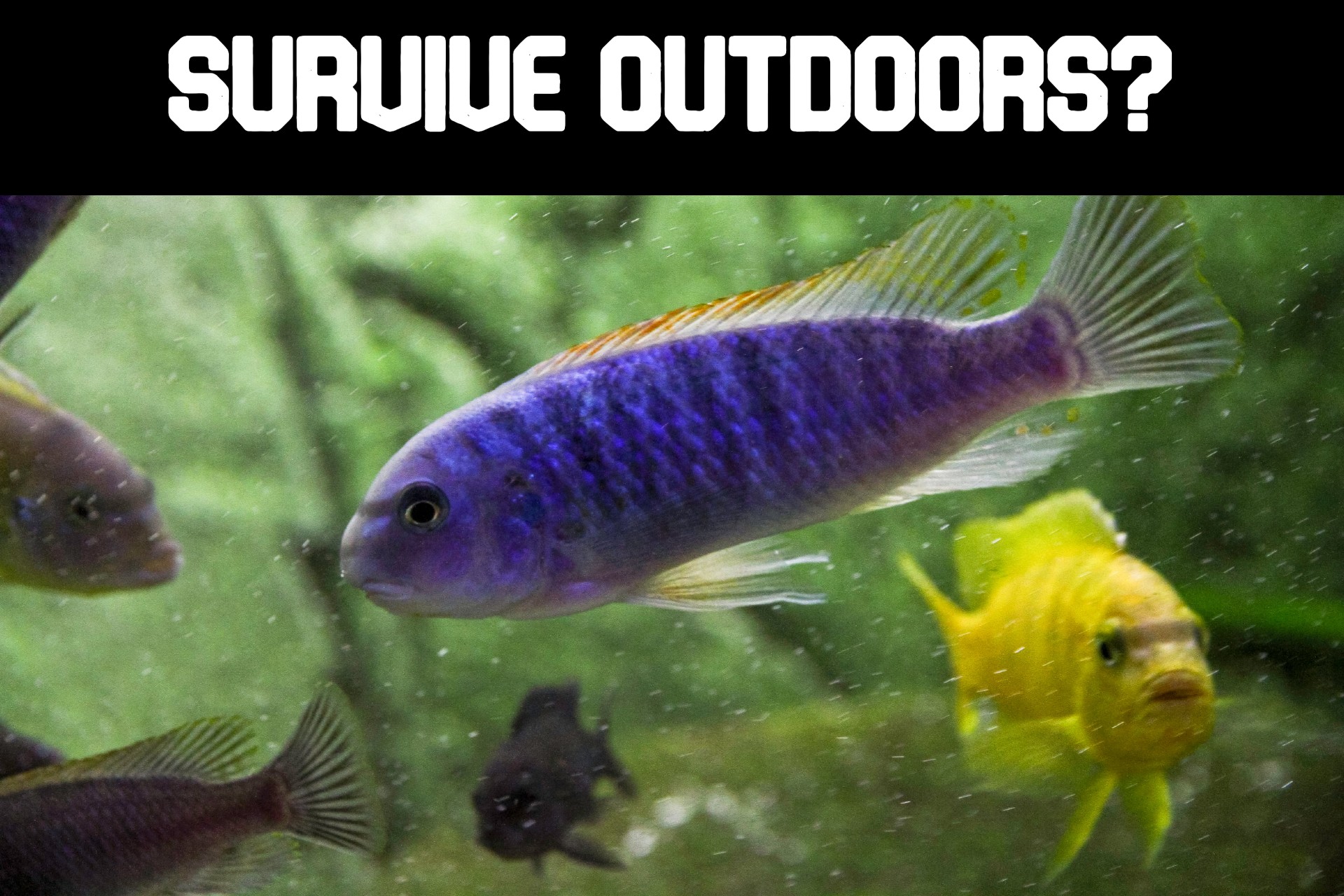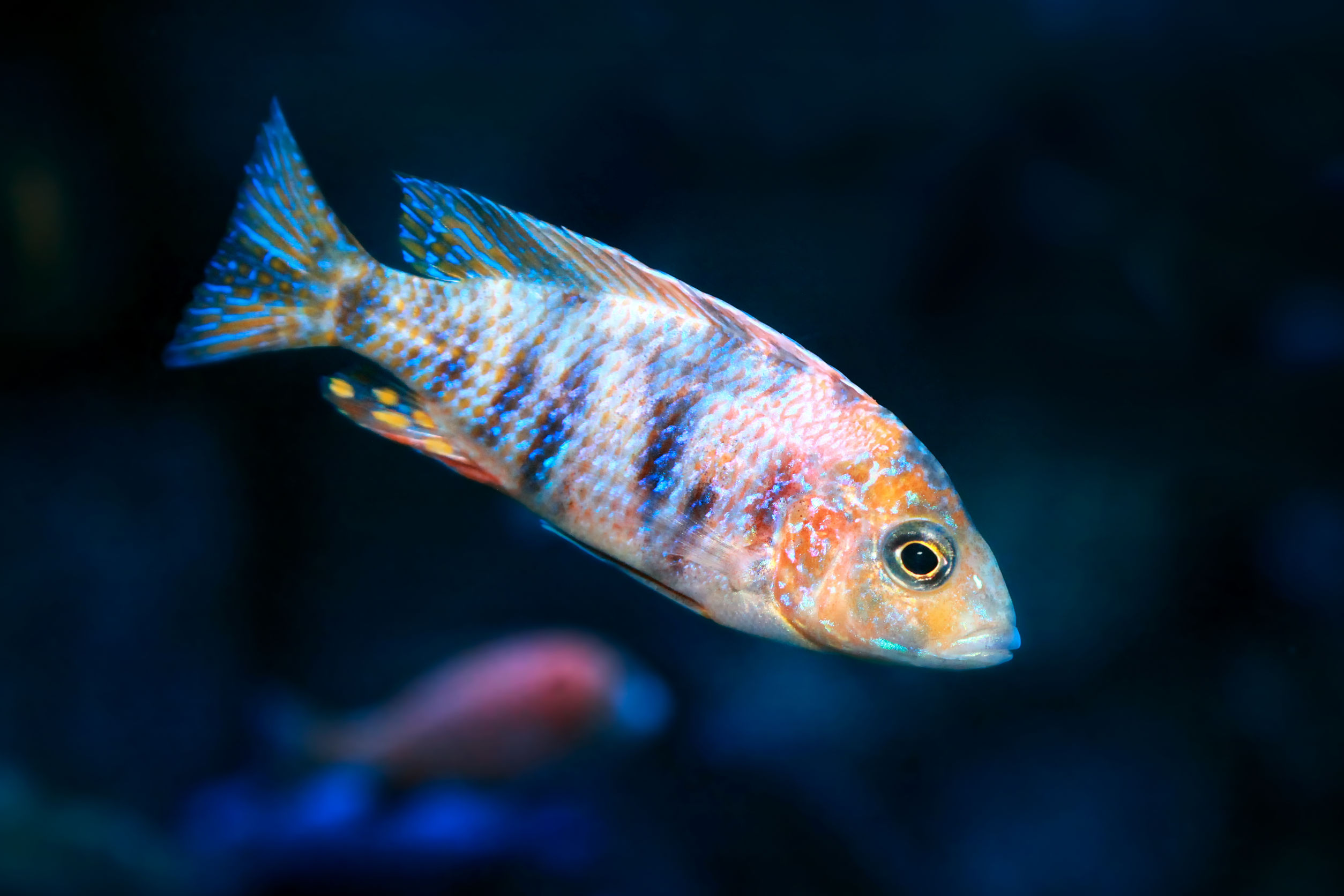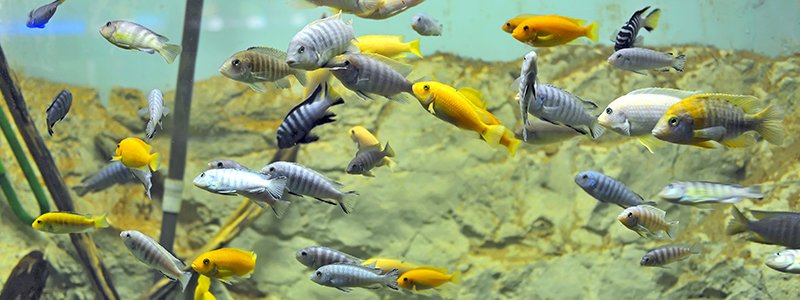Cichlids are fascinating fish. Cichlids are fish from the family of Cichlidae, which are found in the tropical and subtropical waters of Central and South America, Africa, and even parts of Iran and India. The most well-known types of Cichlids are Tilapia, Angelfish, Oscars, and Discus. Most aquarium cichlids are named after their vibrant colors and patterns, such as the Cockatoo, Peacock, and Jewel cichlids.
Keeping Cichlids in backyard ponds is possible because of how cheap and easy to breed they are. Because they are found in tropical freshwater environments, they are only able to survive in outdoor ponds where the water temperature is naturally or artificially heated to around 75-82 degrees Fahrenheit.
Why Cichlids are Perfect for Your Outdoor Pond
With their vast diversity and resilience when it comes to their environments, Cichlids are the perfect fish to fill your outdoor pond with. In fact, they seem to thrive where the sunlight can touch them, they can pick up extra meals with the insects that fall into the water, and they have enough space to keep to themselves.
It’s been known for outdoor Cichlids to grow an inch larger than their friends in the tank, and their colors are much more vibrant.
This is especially helpful when you have a cichlid who is much more aggressive than their tank mates and ultimately ends up becoming a bully. Time away from other fish, especially in an outdoor environment, can help to give them time to cool off.
Another reason Cichlids are a fantastic option for outdoor life is that they are cheap (averaging around $10 each) and are very easy to breed in order to create a healthy and peaceful community. You can also keep a lot of fish in a small area, with tank recommendations stating that you can keep around 15 cichlids for every 55-gallons of space.
Some of the best breeds of Cichlids for outdoor living are:
- Pearscale Cichlid
- Oscars
- Convict Cichlid
- T-Bar Cichlid
- Jack Dempsey (which is named after the 1920’s boxer because of their aggressive nature and strong facial features)
Using these breeds will ensure the survival of your pond fish if you live in an environment where it might get hotter in the day, colder at night or outside predators might decide they are their next meal.
Outdoor Requirements for Cichlids
It’s extremely easy to make a pond suitable to house your family of Cichlids. The only real worry you should have is water temperature. As long as water temperatures are around the high 70s Fahrenheit, they should be just fine.
When the temperature begins to drop below that at night, it’s time to transfer them back inside, unless you are willing to install a heater.
If you begin to notice that your fish are lethargic, it’s a big sign that they need a more comfortable temperature to live in. Other than that, the water value shouldn’t do too much harm so long as the water is regularly changed, filtered, and not sitting stagnant for too long.
In terms of larger groups of cichlids living outdoors, you just need to keep an eye on how they react to each other.
Much like a lot of other fish species, Cichlids can be very aggressive if put into large groups, especially if that group includes fish that aren’t Cichlids of the same Family as them. It’s really only recommended that you put in Catfish and Plecostomus (Sucker Fish) in with Cichlids, seeing as they are bottom feeders that stay out of the way of Cichlids.
How to Create the Perfect Outdoor Pond for Your Cichlids
Heat
If you just building your pond now it’s best to add in a liner at the bottom to ensure more heat and protection for your fish, seeing as it’s a cheap and easy way to keep the cold from coming up from the ground.
If you’re not one of the lucky few whose natural outdoor habitats are consistently around 70’s Fahrenheit, there are a few different options you have to heat your outdoor pond. This includes electricity, solar power, or propane.
For smaller ponds, you can even use a 300-watt aquarium heater. For those ponds that are medium-sized, you would probably do best with a single hot tub heater.
Filtration
Since Cichlids are known for their prolific breeding habits, you should probably take into consideration that your pond population will continue to grow, so be sure to not fill up your pond with fish at first. This also means that the longer you have Cichlids in your pond, and the more fish that will seem to appear out of nowhere, the more filtration you will need to have.
To keep your fish healthy they will need oxygen-rich water that isn’t filled with their own waste, so picking out the right filter is important. A sand filter is a great way to naturally sift through all that waste, getting rid of all the gross material your fish don’t need to breathe back in.
A great rule of thumb for prepping your pond is to let the filter cycle for around 5 to 7 days before you put your Cichlids in. This way you will allow it to let good bacteria build up that will help your fish acclimate.
Decor
Rocks, driftwood, and even flower pots are fantastic décor for your outdoor Cichlid pond, as they love the hiding spots. Since Cichlids can be aggressive to everyone, including their fry, they need hiding spots to stay safe from preying adults.
Another great addition to your outdoor pond is natural plants. They will absorb carbon dioxide and turn it into oxygen, meaning even more natural filtration for your Cichlids. They also help by shading the water, which will help keep your fish cool during the hot summer months.
Negatives To Consider
As with any outdoor environment, there are some things to consider before making the jump to keeping your Cichlids outside.
Local strays are always able to visit your fish, such as cats, opossums, snakes, or even birds that are predatory. Bugs like dragonfly nymphs can eat Cichlid fry. Something you can do to deter pests like that would be to use a net that drapes on the top of your water. While it’s not a very aesthetically pleasing solution, it is effective in keeping things out and your fish safe.
Something else to consider is that pesticides and other contaminants can pose a danger to your fish.
While this risk is a pretty small one, it’s something to keep in mind in case you need to spray your plants or paint your house. Just check your water pH balance regularly, just as you would in your indoor tanks, to get a good guage of how they are doing.
Heating an outdoor pond can also be expensive, so just know that putting a pond outside for tropical fish will push up your bills in order to keep the cichlids alive.





